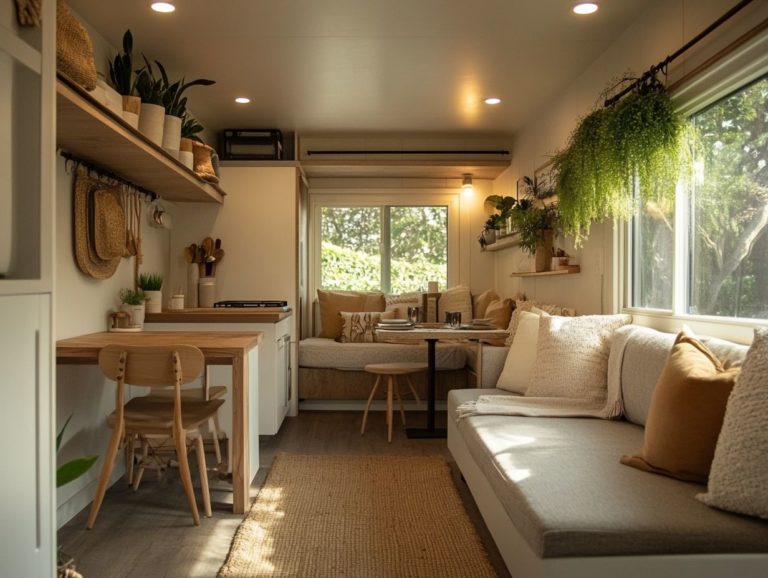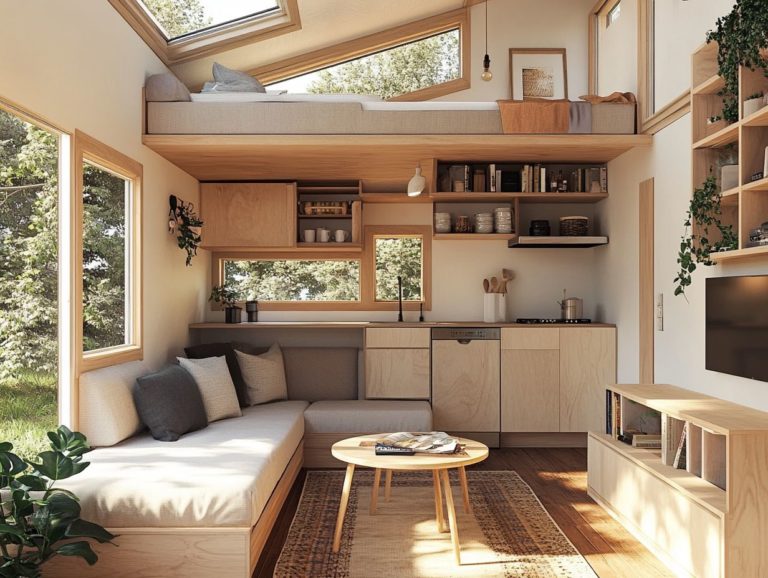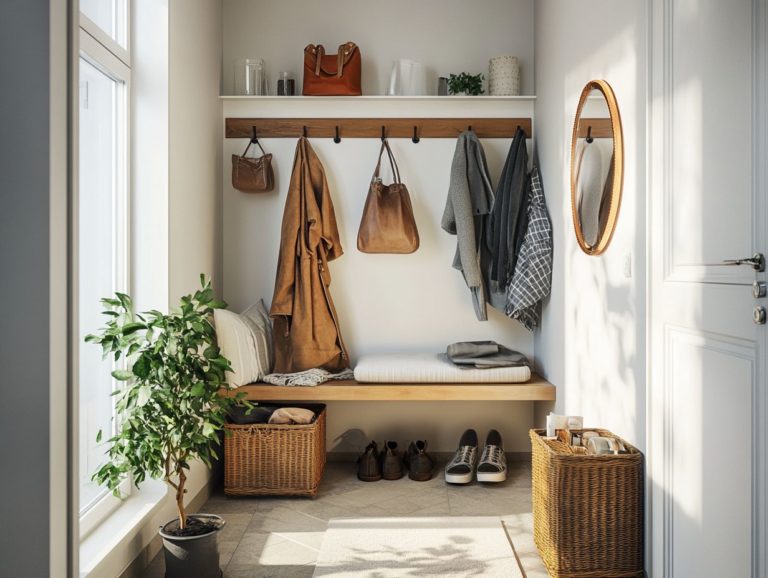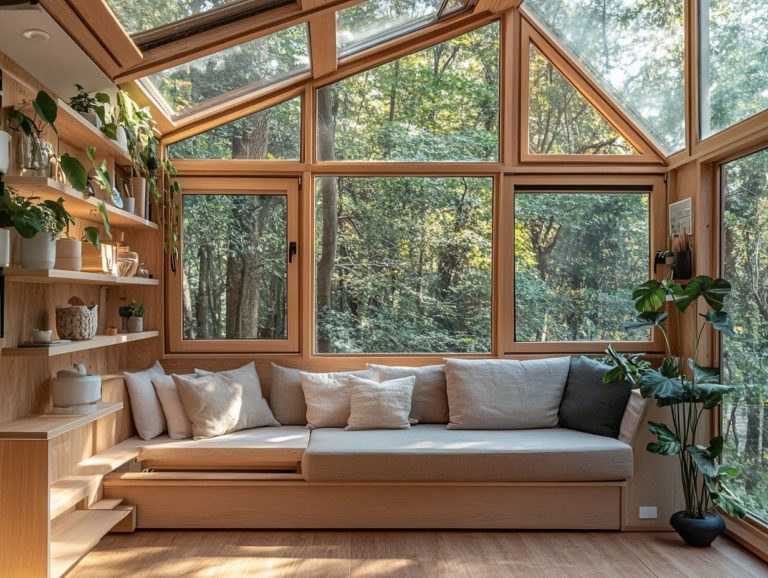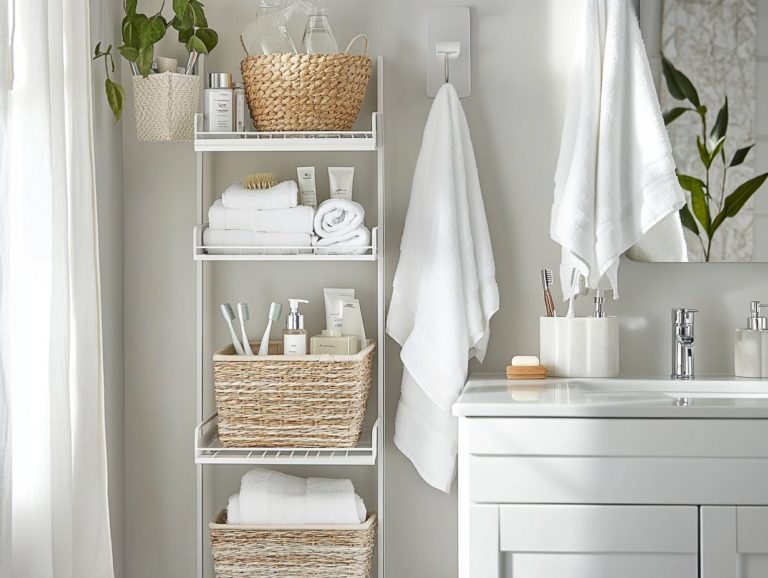Tiny House Living: The Importance of Zoning
Tiny house living transcends mere trendiness; it embodies a profound shift towards minimalism and sustainability. As you delve into this lifestyle, grasping the nuances of tiny homes becomes essential for your journey.
This guide unpacks the concept of tiny houses, illuminating both their benefits and challenges. It also addresses the intricate zoning laws that dictate where and how you can establish your tiny abode.
From navigating local regulations to considering alternative living arrangements, you ll uncover everything necessary for a successful tiny house adventure.
Contents [hide]
- Key Takeaways:
- Understanding Tiny House Living
- Zoning Laws and Tiny Houses
- Navigating Zoning Laws for Tiny Houses
- Alternative Options for Tiny House Living
- Frequently Asked Questions
- What are land use rules and how do they relate to tiny house living?
- Why should I follow land use rules when living in a tiny house?
- Can I legally live in a tiny house on wheels anywhere?
- What challenges do land use rules pose for tiny house living?
- Are there exceptions to land use rules for tiny house living?
- What should I do before buying or building a tiny house?
Key Takeaways:
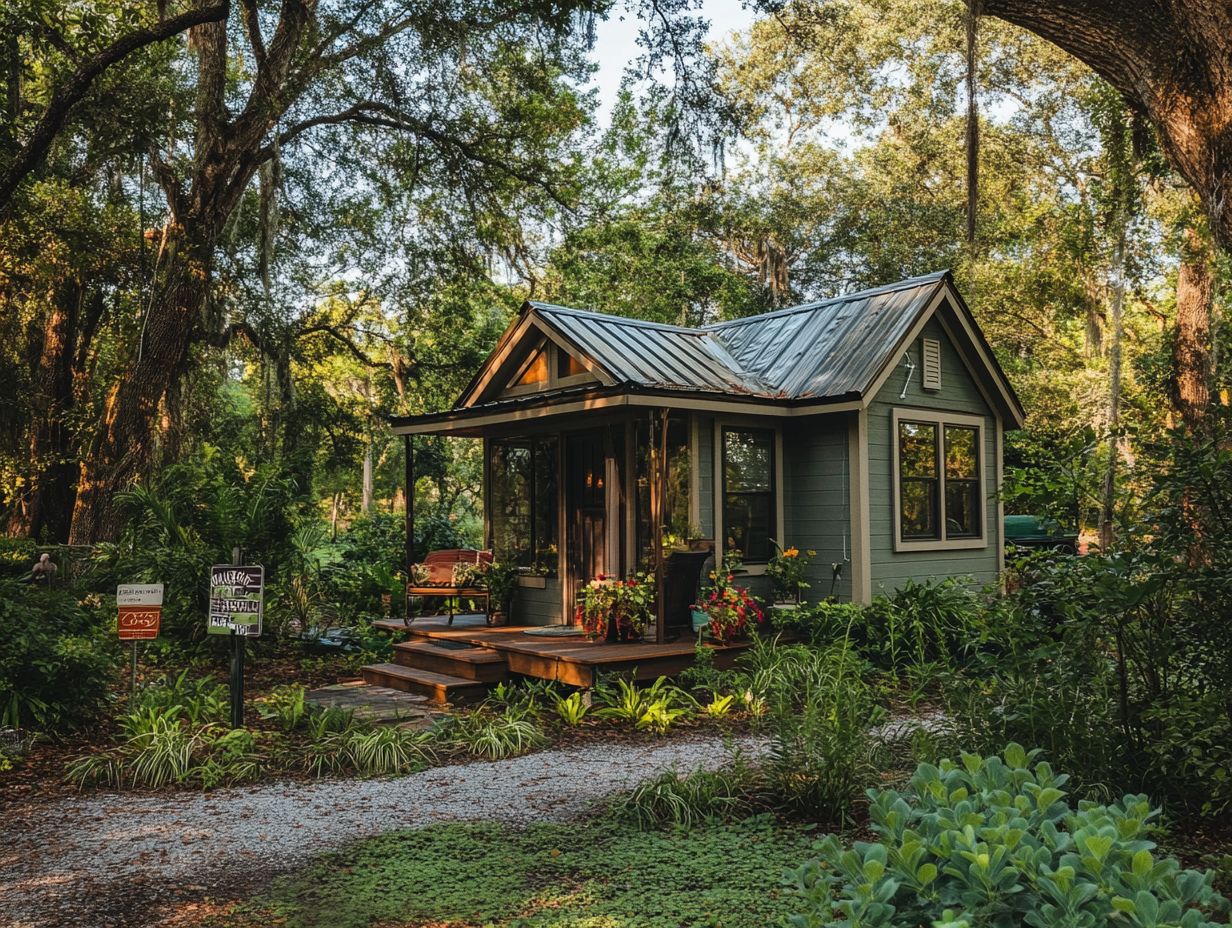
- Tiny house living offers unique benefits and challenges, including affordable living and simple living.
- Zoning laws play a crucial role in determining where and how tiny houses can be legally placed.
- Navigating zoning laws requires thorough research and obtaining necessary permits and variances. Alternative options, such as co-housing and RV parks, may also be viable solutions.
Understanding Tiny House Living
Understanding tiny house living involves exploring the essence of compact dwellings. These homes are crafted for a minimalist lifestyle, optimizing every inch of space while prioritizing sustainability.
The tiny house movement has gained remarkable momentum among those seeking affordable housing solutions that resonate with their values of simplicity and intentional living. These homes, typically under 400 square feet, serve as primary residences and alternative living arrangements.
This innovative approach to home living prioritizes functionality over excess, allowing you to embrace a simpler, clutter-free existence. Tiny homes come in various forms, such as accessory dwelling units (ADUs) that add extra living spaces to existing properties, and container homes crafted from repurposed shipping containers for a unique housing option.
As this trend continues to grow, you must understand the legal frameworks surrounding these dwellings. Regulations vary by region and are often shaped by zoning laws and building codes at both state and federal levels. Familiarizing yourself with the understanding tiny house land use laws and the necessary permits and construction standards will help ensure safety and compliance in your tiny home journey.
Benefits and Challenges of Tiny House Living
Tiny house living opens doors to incredible benefits! These include affordable housing solutions, a reduced environmental impact, and a simplified lifestyle.
However, it also brings challenges that you must navigate, such as zoning regulations, building codes, and community aesthetics. The allure of tiny homes often stems from their remarkable ability to lower living costs, making home ownership attainable for a broader audience.
Environmentally conscious individuals find great value in these compact dwellings, as they encourage minimalism and promote a significant reduction in carbon footprints. Yet, potential owners frequently encounter obstacles like local zoning laws dictating where these homes can be situated, along with legal challenges of the tiny house movement complicating the construction process.
The aesthetic shift in neighborhoods can lead to resistance from long-term residents, underscoring the delicate balance between innovative living solutions and the expectations of traditional community standards.
Zoning Laws and Tiny Houses
Zoning laws are essential legal frameworks set by local governments to regulate land use. These regulations play a crucial role in determining the feasibility and legality of tiny houses as viable housing solutions within different communities.
Understanding tiny house zoning laws is vital for anyone considering tiny house living, as they dictate where and how such innovative housing options can thrive. You must understand the legal frameworks to avoid potential pitfalls!
What are Zoning Laws?
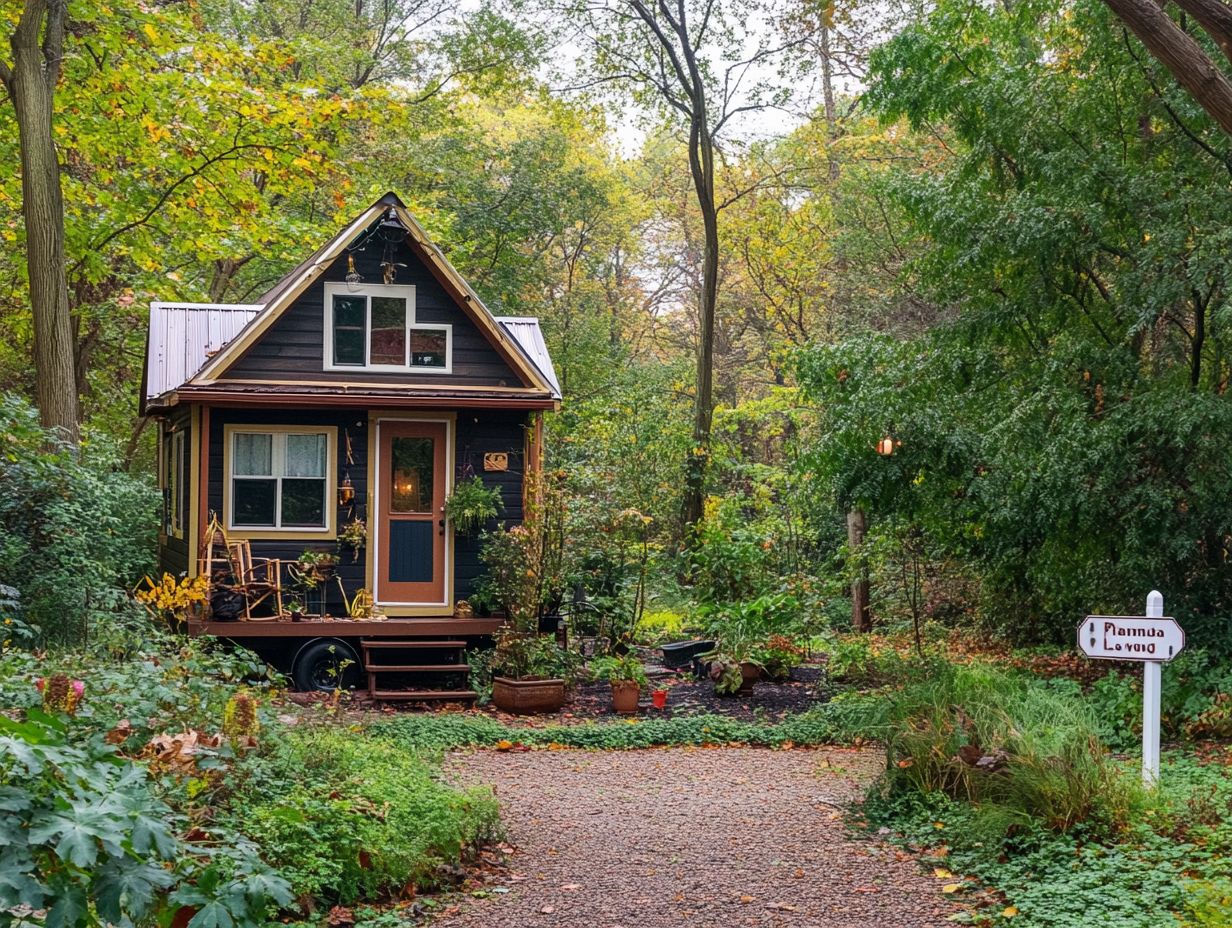
Zoning laws are the regulations established by local governments that dictate how land can be utilized. They shape everything from residential architecture to commercial development and even tiny house communities.
These laws play an important part in maintaining order and safety in urban planning. They balance the needs of various stakeholders while promoting sustainable development. If you’re interested in tiny house living, it’s crucial to be aware of the legal aspects involved, such as those detailed in your legal checklist. Typically, zoning laws fall into several categories: residential, commercial, industrial, and agricultural. Each category comes with specific provisions regarding land use, building height, density, and design aesthetics.
The influence of these regulations is felt across various housing types, including the increasingly popular tiny homes. These homes are known for their affordability and sustainability. However, many local zoning ordinances, which are local laws that define land use, pose challenges for tiny house residents. To navigate these challenges, it’s essential to understand tiny house regulations, as they restrict where these homes can be placed or how they can be constructed, impacting the broader movement toward minimalistic living.
How do Zoning Laws Affect Tiny House Living?
Zoning laws play an important part in tiny house living. They impose specific regulations that can either pave the way or create obstacles for establishing tiny homes within various communities. Local zoning challenges can greatly influence your experience.
These regulations set rules about where to place your tiny home, establish minimum square footage requirements, and dictate design elements you must follow. For more detailed information, you can check the tiny house regulations and building practices. This can potentially limit your creative expression.
For many tiny homeowners, navigating these laws can feel like a challenging task that demands thorough research and, at times, legal advice. Communities often have different definitions of what constitutes a dwelling, leading to confusion over the legitimacy of tiny houses as viable housing options. It’s important to be aware of tiny house residency laws you should know to ensure compliance and peace of mind.
This lack of uniformity makes it challenging to integrate into neighborhoods. The friction between traditional home standards and innovative housing solutions creates a complicated landscape for sustainable living.
Navigating Zoning Laws for Tiny Houses
Navigating the world of zoning laws for tiny houses requires thorough research into local regulations. It s essential to obtain the necessary permits and exceptions to the rules to ensure you comply with building codes and zoning requirements.
This diligence is crucial for turning your tiny home dream into a reality and will help you avoid potential pitfalls down the road.
Researching Local Zoning Laws
Researching local zoning laws requires a nuanced understanding of the regulations established by planning authorities and how they interact with federal guidelines and state regulations for tiny homes.
This important endeavor begins with pinpointing the specific zoning district where your property resides. Each area may impose unique stipulations regarding land use, building heights, and occupancy.
You should engage with your local planning department or zoning board to obtain the official documents and guidelines necessary for your project. You can also use online databases and resources, such as state and federal housing websites, to gain further insights into compliance requirements.
Connecting with local homeowner associations or community groups can provide invaluable firsthand experiences and networking opportunities. This can help you navigate the often intricate tiny house zoning issues with confidence.
Obtaining Necessary Permits and Variances
Obtaining the necessary permits and variances is a crucial step in your tiny house journey. This ensures that your construction complies with local building codes and zoning regulations, helping you steer clear of any legal complications.
This process typically begins with a thorough exploration of specific local laws, as regulations can differ significantly from one municipality to the next. Start by reaching out to your local planning or building department to gather information on the required applications, fee schedules, and any unique stipulations pertaining to tiny houses, including tiny house parking legal guidelines.
Next, it’s essential to prepare detailed documentation, which may include site plans or architectural drawings that accurately represent your intended structure. While this journey can feel overwhelming at times, understanding potential hurdles such as the need for public hearings or neighborhood consultations can help you navigate the legal landscape more smoothly.
Taking a comprehensive approach streamlines your permit and variance acquisition process, paving a successful path toward tiny house living.
Alternative Options for Tiny House Living
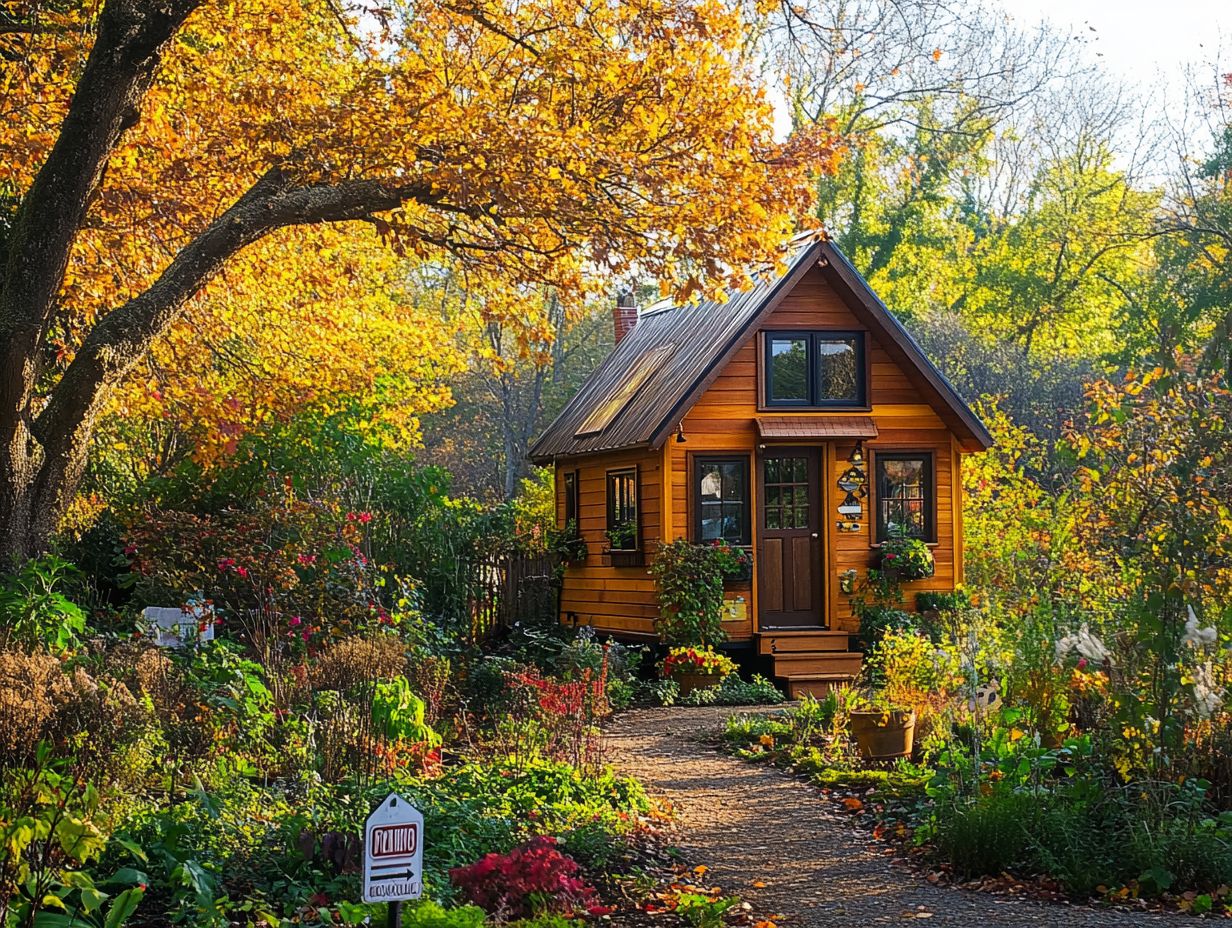
Consider alternative options for tiny house living that can elevate your experience. You might explore joining vibrant tiny house communities, settling into RV parks, or even utilizing campgrounds.
Each option offers remarkable flexibility in terms of location and opportunities for community integration. This allows you to craft a lifestyle that aligns perfectly with your aspirations.
Communities and Co-Housing
Tiny house communities and co-housing arrangements foster a profound sense of belonging and shared resources. They champion sustainable living and enhance the aesthetics of community life.
These innovative living setups encourage you to connect on a deeper level, fostering a vibrant atmosphere where collaboration flourishes. Residents often share communal gardens, tools, and spaces for social gatherings. This nurtures friendships and helps minimize waste while reducing individual consumption.
The building design typically showcases green building practices and eco-friendly materials, creating an inviting environment that enhances your personal well-being and elevates the overall charm of the neighborhood.
This lifestyle supports a variety of activities, from workshops to potlucks, allowing you and your neighbors to exchange skills and celebrate unique cultures while keeping sustainability at the forefront.
RV Parks and Campgrounds
RV parks and campgrounds are a great choice for tiny house enthusiasts seeking temporary living arrangements. They often help bypass strict land use rules.
This flexibility is exciting for those who want a more nomadic lifestyle or wish to immerse themselves in nature. While RV parks can be convenient, they might not provide the lasting community feel you desire.
Amenities at these locations can vary widely and influence your comfort. However, these spaces can help you connect with like-minded individuals and offer unique experiences as you explore new places with your compact home.
Frequently Asked Questions
What are land use rules and how do they relate to tiny house living?
Land use rules dictate where buildings can be placed in a city, town, or county. They are crucial for tiny house living as they determine where tiny homes can be legally built and lived in.
Why should I follow land use rules when living in a tiny house?
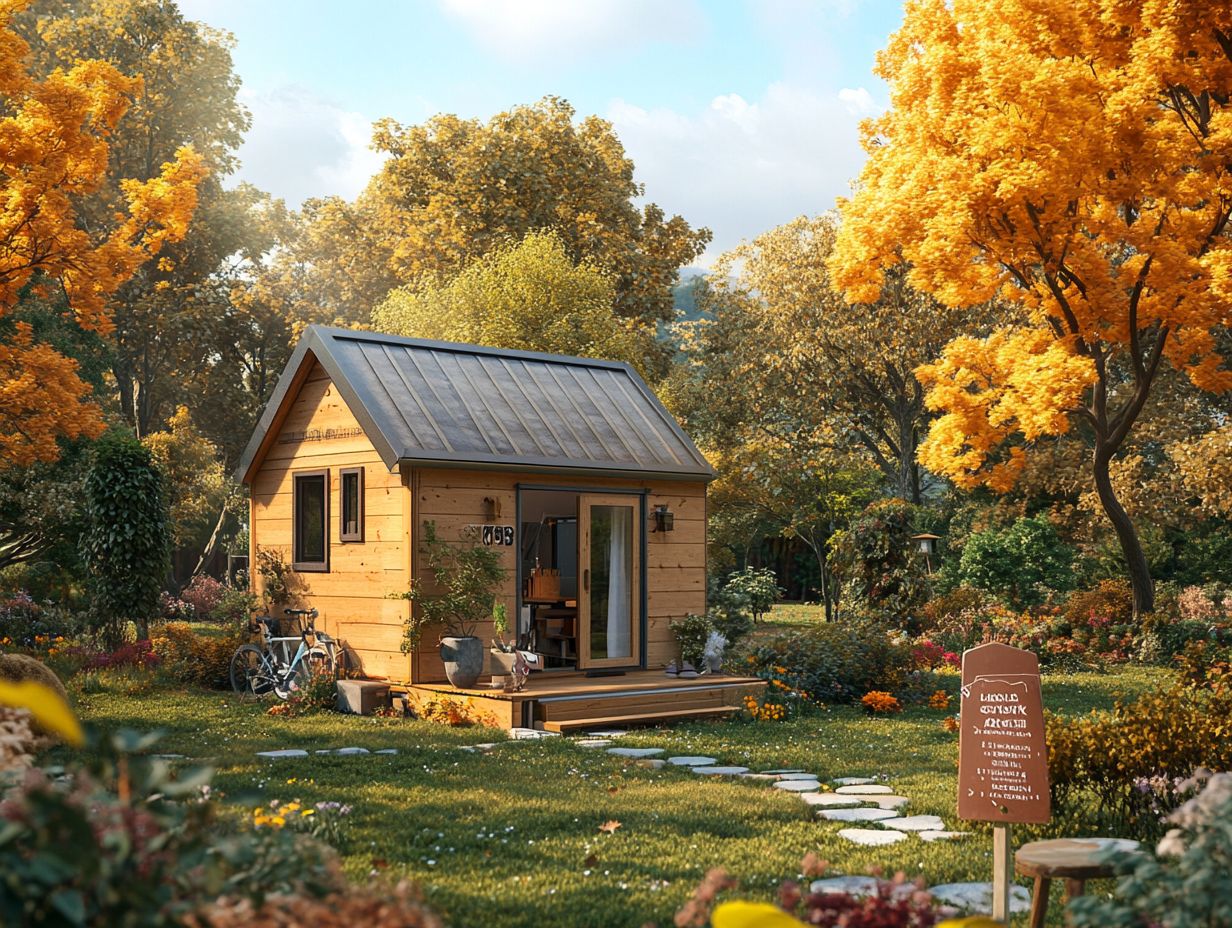
Following land use rules is essential for those living in tiny houses. It ensures safety and compliance with building codes while protecting the community s property values.
Can I legally live in a tiny house on wheels anywhere?
No, you cannot live in a tiny house on wheels anywhere. Typically, these homes are allowed only in areas designated for RVs or mobile homes.
What challenges do land use rules pose for tiny house living?
Finding a suitable location zoned for tiny homes can be a major challenge. Navigating the various land use rules can also be complex, as they differ significantly by location.
Are there exceptions to land use rules for tiny house living?
Sometimes, you can obtain special permits to allow tiny house living in certain areas. However, these exceptions are rare and may involve a lengthy process.
What should I do before buying or building a tiny house?
Research the land use rules in your desired area before purchasing or building. Consulting with a local zoning official or lawyer can help you ensure compliance and prevent future issues.
Discover your perfect tiny home setup today!

